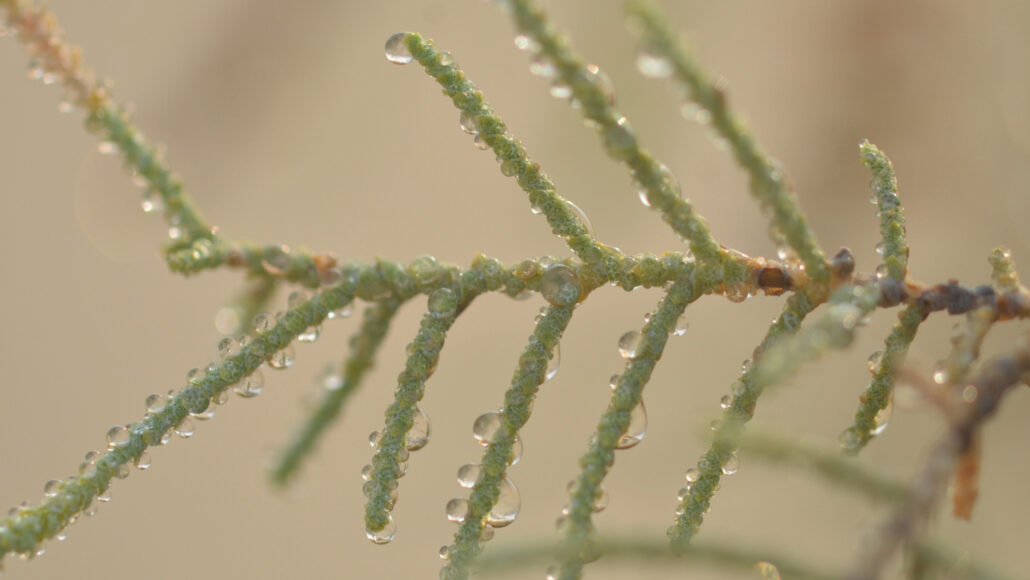Researchers from the New York University Abu Dhabi (NYUAD), the Max Planck Institute for Solid State Research in Stuttgart, Germany, and the MS/XPD beamline of SESAME have published in the Proceedings of the National Academy of Sciences of the United States of America (PNAS) a study of the mechanism used by Athel tamarisk (Tamarix aphylla), a xerophyte tree that grows along watercourses in arid areas, to capture water.
Athel tamarisk (Tamarix aphylla), is an evergreen that can grow to a towering 18 meters tall, and can survive in arid, hypersaline conditions by excreting on the surface of its spindly leaves a concentrated solution of ions as droplets that crystallize into salt crystals and fall off the branches.
The research, led by the Post-Doctoral Associate Marieh Al-Handawi and by Panče Naumov, Professor of Chemistry at the NYUAD Smart Materials Lab and the NYUAD Center for Smart Engineering Materials (CSEM), demonstrates that T. aphylla releases droplets that tightly stick to its surface and solidify into a combination of salts. These salts have the ability to collect water from the air even at humidity levels as low as 50-55%. Furthermore, it offers proof that the plant is capable of absorbing water via its leaves, a process that is facilitated by the hygroscopic nature of the salt combination and the ability of the surface to retain water. This improved technique for retaining and collecting water is distinct from other documented xerophytes, which usually rely on surface modifications to condense water from dew or fog. Contrarily, T. aphylla predominantly relies on chemical methods to keep the salt solutions it secretes in touch with its leaves. This results in the formation of large salt crystals that can be dispersed by wind. In a broad sense, this study uncovers a distinct natural mechanism for water usage and presents opportunities for creating environmentally friendly formulations using a mixture of biogenic salts. These formulations could be utilised to efficiently collect water from the air or to stimulate cloud formation in areas with low humidity.
Within a broader context, this natural mechanism for humidity harvesting that uses environmentally benign salts as moisture adsorbents could provide a bioinspired approach that complements the currently available water collection or cloud-seeding technologies.
For more details, see in the Proceedings of the National Academy of Sciences (PNAS) |
https://www.pnas.org/doi/10.1073/pnas.2313134120


